Sometimes you don’t know if a visit to your local urgent care or the Emergency Room is right for your medical condition.
Learn some of the basic conditions and ailments that set them apart to help you choose when the time comes.
When Should I Choose Urgent Care?
When deciding if you should use urgent care or walk-in clinic, it’s important to know when it is the best choice.
Urgent care is a good choice for medical needs that need quick attention but are not life-threatening.
Here are some scenarios where urgent care is appropriate:
- Cold, Flu, and Stomach Viruses
- Ear and Eye Infections
- Sports Injuries
- Slips and Falls, Sprains, Strains, and Pulled Muscles
- Strep Throat, Mono, UTI, and STDs
- Allergic Reactions
- Minor Burns
- X-Rays
- Cuts & Stitches
- Minor Broken Bones
However, remember to choose the emergency room for life-threatening emergencies, severe injuries, or conditions requiring comprehensive care. Always trust your instincts about the severity of your condition.
When Should I Visit the Emergency Room?
Visiting the emergency room (ER) can be a crucial decision in ensuring you receive appropriate medical care.
Here are some situations in which you should consider going to the ER:
- Severe Chest Pain or Heart Attack
- Difficulty Breathing
- Signs of Stroke
- Loss of Consciousness
- Severe Bleeding
- Major Injuries
- Potential Overdose or Poisoning
- Severe Abdominal Pain
- Severe Allergic Reactions
- Sudden Behavioral Changes
This is not a complete list of symptoms and issues. If you are ever in doubt, visit your local ER or dial 911 immediately.
What is the Cost Difference Between Urgent Care and the ER?
When thinking about the cost difference between urgent care and the emergency room (ER), consider a few factors.
- On average, a visit to urgent care can range from $100 to $200.
- The ER visits can start around $300 and go much higher depending on the services required.
- Insurance plans have different coverage specifics for urgent care and emergency room services. Always be sure to check with your insurance plan directly to get specific cost details.
- The ER provides a higher level of care. This includes advanced imaging, lab work, specialists, and cardiac intervention. It also has operating rooms and more services.
Urgent Care and Emergency Room Wait Times
When considering healthcare options, wait times can significantly influence your choice between urgent care and the emergency room (ER).
Urgent care centers typically have shorter wait times of 30 to an hour.
ER wait times can vary widely, often ranging from one hour to several hours. Healthcare providers can also admit patients for additional care.
What Are Some Additional Services Urgent Care Provides?
Urgent care centers typically can provide more than just non-life-threatening medical services, such as:
- IV Hydration for mild dehydration
- Stitches for minor cuts
- Wound Care
- Common Vaccines
- X-Rays
- Occupational Medicine
- Drug & Alcohol Testing
- Physical exams for adults and children
- Help with PCP (Primary Care) and specialist referrals

